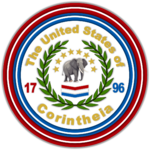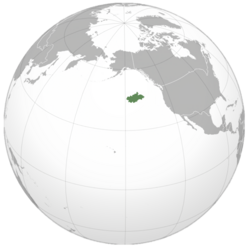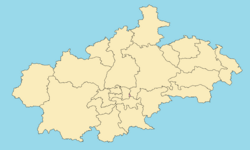Corintheia
This article is incomplete because it is pending further input from participants, or it is a work-in-progress by one author. Please comment on this article's talk page to share your input, comments and questions. Note: To contribute to this article, you may need to seek help from the author(s) of this page. |
United States of Corintheia | |
|---|---|
| Capital | Augusta City |
| Largest | Saint George |
| Official languages | English |
| Government | Federal presidential constitutional republic |
| Sandra Carter (P) | |
| Ronald Hartman (P) | |
| Stanley Anderson (N) | |
| Matthew Reynolds | |
| Legislature | Congress |
| Senate | |
| House of Representatives | |
| Independence from | |
• First revolution | April 3, 1703 |
• Second revolution | October 10, 1790 |
• Autonomy | February 22, 1795 |
| April 9, 1796 | |
| Area | |
• Total area | 673,977 km2 (260,224 sq mi) |
• Water (%) | 2.33 |
| Population | |
• 2023 estimate | 105,238,315 |
• 2018 census | 103,867,268 |
| Currency | Corintheian dollar ($) |
| Time zone | UTC−08:00 (PST) |
• Summer (DST) | UTC−07:00 (PDT) |
| Date format | mm/dd/yyyy, CE |
| Driving side | right |
Corintheia, officially the United States of Corintheia, is a country located in North America and consists of 22 states, a federal district, and 24 native-Corintheian reservations. Corintheia is the fortieth largest country by land and is completely surrounded by the Pacific Ocean. The population as of 2018 was recorded at 103,867,268, making it the fifteenth most populous country in the world.
Corintheia is a developed country that is moderately wealthy, with an exceptional educational, health, and welfare systems. Universal health care is a guarenteed right in Corintheia through a single-payer system. Citizens are automatically enrolled in UniHealth when they are born and are usually discharged from the program after death. There are options for private insurance that can work concurrently with UniHealth. The public educational system is overseen by the Department of Education and offers free public schooling from pre-school to university. There are several private elementary, secondary, and tertiary schools within the educational system as well. The Security Assisantce Program (SAP) is a welfare program that includes, social insurance, pensions, food assistance, temporary housing, employment assistance, etc.
History
Around 3200 BCE, Corintheia became home to indigenous peoples migrating from modern-day western Canada and western United States. Over centuries, these settlers formed diverse tribal societies, with the Qorqithia emerging as a prominent group in the eastern regions. The Qorqithia were known for their distinct cultural traits, emphasizing loyalty, courtesy, and dependability.
Geography
The expansive territory of Corintheia, spanning 260,224 square miles, showcased remarkable geographical diversity. Despite its northern location, the island experienced a spectrum of climates, ranging from hot and humid summers to rainy and cool autumns, cold and snowy winters, and rainy and warm springs. Occasional hurricanes, though infrequent due to the island's northerly position, impacted the region between July and October.
Government
The Corintheian government is a federal presidential constitutional republic with a representative democracy structure. The federal government is made up of three separate but co-equal branches of government: legislative, executive, and judicial. The Congress is bicameral composed of a lower house, the House of Representatives which is proportional to the population and an upper house, the Senate which has equal representation for each state.


